A truly rare bird: Flettner FL 282 "Kolibri" V23 as US-prize aircraft, summer 1945
I would like to begin my contribution to the presentation of the FL 282 with a personal thought: my approach to aircraft modelling is fed by several sources, as is probably the case with most of us. One of them is the fascination with the history of technology, which can amaze me with remarkable reliability. I can well remember that in earlier years the one or other realisation of the wonderfully imaginative and sensible ways in which things could be made to fly gave rise to the desire to be able to build this piece of aviation history in a model. Only: at that time, such exotic things were not available as a kit. Well, times seem to have changed!
In the happy days of today, surprisingly exotic flying material is also offered as models. Isn't it remarkable what rare birds are waiting to be realised in well-produced kits?
Some kits can even tell new stories about the history of technology and offer fascinating insights into aspects that I was not aware of - and that brings me back to the Flettner FL-282 Kolibri and the kit from MiniArt!
About the: Flettner FL 282B "Kolibri".
One issue has to be considered with any rotorcraft: the driven rotating rotor generates a torque which has to be counteracted. As is well known, there are several answers to this requirement: torque-neutralising propellers at right angles to the rotor's plane of rotation or corresponding jet outlets on fuselage booms, two counter-rotating rotors in tandem or one above the other and, which was not present to me until I encountered this kit, "intermeshing" rotors according to Anton Flettner's patent!
With this principle, the two rotor heads are close together, with their axes shifted at a small angle to each other. Turning at the same speed as well as in opposite directions, the result is a drive that elegantly solves the challenge of balancing torque and, no small bonus, certainly makes for a spectacular sight.
The man behind this concept was Anton Flettner, a name that still has a good reputation in aviation, especially in the field of rotorcraft. This is no coincidence: Flettner must have been an incredibly innovative and enterprising man who was able to successfully apply for patents in numerous areas. The Flettner rudder, for example, a patent from 1918, is still well-known and indispensable today. But Flettner's interests also included questions of the control of torpedoes, the ventilation of closed rooms without their own drive ("Flettner ventilator"), the locomotion of ships by means of wind power through rotating metal cylinders, so-called rotor ships, or his great contribution to the development of helicopters.
Thanks to innovative engineers like Flettner, Germany was the undisputed leader in helicopter development in the 1930s and 1940s. This is also evident in the history of the FL 282, the first series-produced and operational helicopter in the world. Work on the FL 282 began as early as 1939, and Flettner was able to draw on years of experience with two predecessors of similar design. Both the FL 165, developed in 1936, and the FL 265, which flew from 1938 onwards, featured the intermeshing rotor design for which Anton Flettner had been granted a patent on 13 February 1938.
The FL 282 was given the beautiful name "Hummingbird" because of its unusual appearance with the rotors turning. Apparently, seen from the bow or stern, it was reminiscent of the whirring flight of the small tropical bird. The purpose for which the FL 282 Hummingbird had been designed was military from the beginning. The navy in particular was interested in the new aircraft as a reconnaissance platform and for anti-submarine warfare. The "Erprobungsstelle Travemünde" (Travemünde test centre) carried out corresponding trials with the various prototypes, which yielded encouraging results from the outset.
Accordingly, it is not surprising that it was a naval unit that actually put the FL 282 into service. As early as April 1940, a requirement of 40 FL 282s had been reported as shipboard aircraft, and a further 50 helicopters were to be put into service for anti-submarine warfare. Interestingly, these plans also included a modification which was to make the helicopter suitable for use from large submarines under the designation FL 282U. In November 1942, operational testing under frontline conditions began, with some FL 282s being transferred to the mining ship "Drache" stationed in the Mediterranean.
A little earlier, in October 1942, the Bordfliegerstaffel 3./196 had been established, which also served to test rotary-wing aircraft under operational conditions. The first trials with sea rescue sounded out the future potential of helicopter aviation: a man was "rescued" from a rubber dinghy and dropped ashore. However, the course of the war soon limited the further expansion of the naval helicopter fleet. Finally, in February 1944, production of the FL 282 was discontinued after a good 20 models, as resources were now reserved for the production of fighter aircraft. The 3rd /196 Squadron had to be disbanded in the summer of the same year.
However, interest in the new helicopter was not limited to the navy alone. Already at the beginning of 1943, the Army expressed great interest in the model. A procurement plan for more than 1000 FL 282s was formulated, and the delivery of a first tranche of 150 models was planned for April 1943. Similar to the development tasks for the navy, however, the concrete implementation of these plans was hindered by the jealously guarded dominance of the Luftwaffe over all aircraft. In view of dwindling resources and an increasingly strained war situation, the delivery of the new helicopter to the Army was ultimately not to be realised either.
Flettner's formidable helicopter had an interesting afterlife after the end of the war: two intact FL 282s were still being tested by the Americans in Germany, later brought to the States and continued to be flown intensively. Flettner's entangled comb rotor system did not remain without consequences; the "Kaman Aircraft Corporation", founded in 1945, adopted the principle for its own helicopter development, which was to lead to a series of successful designs. Anyone who experiences a "Kaman K-Max" in flight can still get a good impression of Flettner's impressive comb rotor system.
Although Anton Flettner himself went to the USA in 1947, he did not work for Kaman, but founded his own company, the "Flettner Aircraft Corporation" in Kew Gardens, New York. With this company, Flettner was a sought-after technical advisor, not only at Kaman, but also with the US Navy and Air Force.
My model here shows the Fl 282B V23, one of the two pre-series aircraft that were taken over by the Americans and extensively tested in Germany and then in the USA from the summer of 1945. The V-23 is one of those few FL 282s that were modified to carry a second crew member. This sat directly behind the rotor heads in a cut-out in the fuselage fairing, with the head protruding beyond the contour of the fuselage just below the rotating rotors. Certainly a spectacular place to work!
About the kit
The FL 282 was the first kit from MiniArt that I was able to try out. As I had already heard from experts, the kits from this manufacturer tend to be fragile and complex in construction. Even a tank model, which is actually a solid affair, can turn into a wobbly and not very stable construction with MiniArt.
After my experience with the FL 282, I would like to believe that! Of course, it is in the nature of things that a lot of lattice work, exposed control rods and all kinds of fragile levers have to be glued here, but things were not exactly made easier by a rather mediocre fitting accuracy.
On a positive note, I noticed the high standard of the depiction of the interior. Nothing seems to have been left out. In several construction steps the modeller is instructed to add fragile detail to fragile detail, at the end it becomes apparent that this effort was well worth it! The sight of the undisguised "inner values" of the FL 282 already looks good!
After the proportions of the "hummingbirds" seemed to make a "tailsitter" inevitable, I had almost resigned myself to a final result that would rest on the rear end. So it was more in defiance than any real plan that I actually weighted down the only components of this open, lightweight construction that could be weighted down: these were in the form of the two tanks mounted on the outside of the front fuselage. So I filled the two half-shells from which these moulds are made with lead paste from "Greenstuff" - and lo and behold: it was just enough to hold the "Kolibri" on the nose wheel. So I can only advise those who are interested not to give up hope too soon - it can work out!
One shortcoming of this kit is that the accuracy of fit is somewhat lacking in many of the detail moulds. Not only the casting, but also the design of some parts seems to me to be a little bit unkind, some forms seem to be a little bit "washed out". This is especially noticeable with the fairings of the pilot's seat and the engine compartment, which have to be attached towards the end. Here, measurements and adjustments had to be made beforehand, and after gluing these parts together, filling, sanding and engraving were the order of the day.
However, all this should not deter anyone from tackling this interesting and quite buildable model! However, one should have reserved some time and nerve to deal with the mentioned peculiarities.
In conclusion, the Fl 282 "Kolibri" was one of those projects that I found incredibly instructive. This applies not only to the gain in modelling experience, but also, to end with the thought mentioned at the beginning, the highly interesting new insights into the history of flight technology!
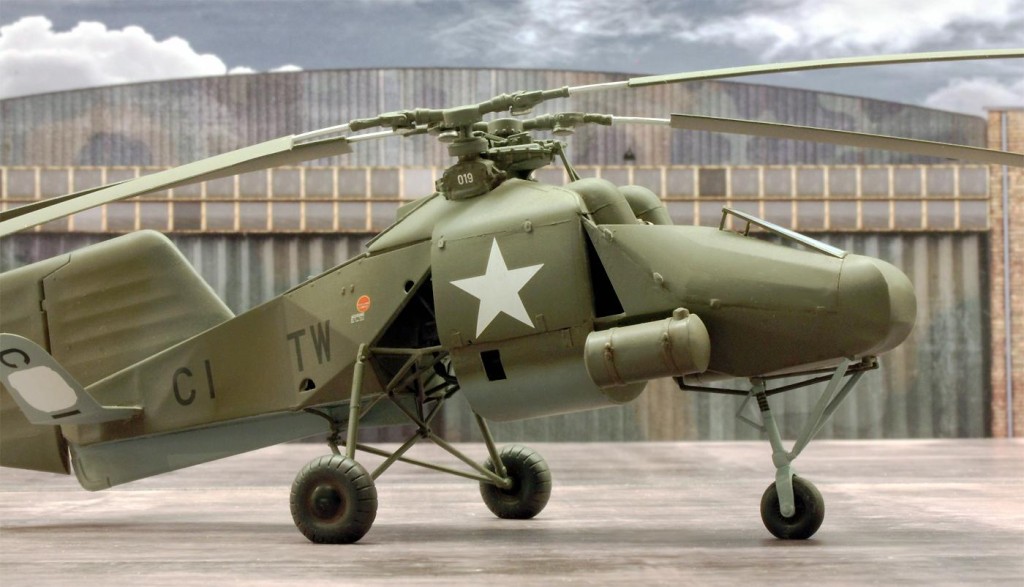

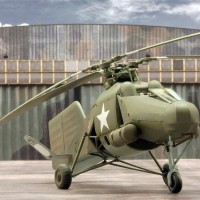

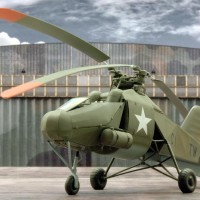
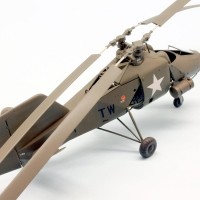
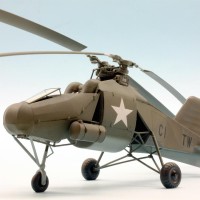
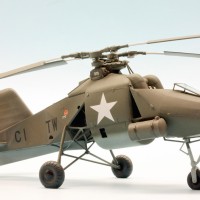
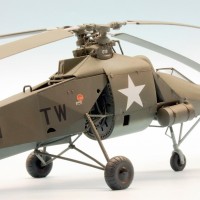
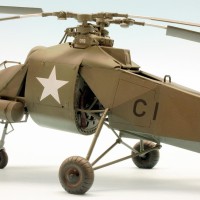
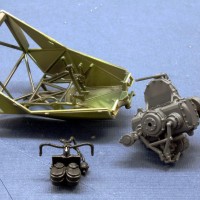

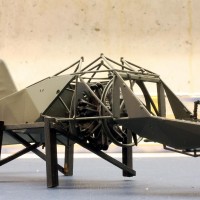
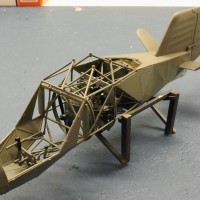
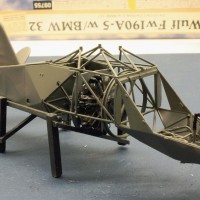
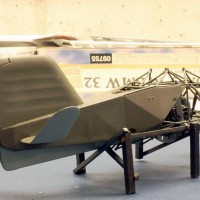


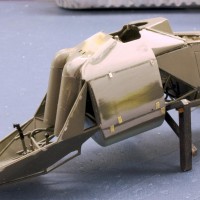
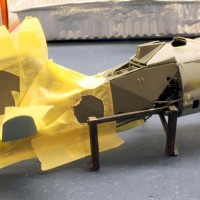
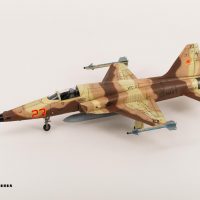
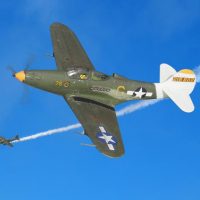
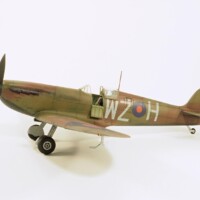

An amazing build of this very unusual aircraft, Roland @rosachsenhofer
I do to find the beginning of helicopters very interesting.
Recently finished the Doblhof WNF342, another interesting helicopter model.
Thanks for sharing the background of this aircraft, very nice to read.
Well done.
thank you for your words! Your Doblhof WNF342 is a fascinating model, congratulations!
Another amazing model, Roland!
Where to start from?
The model itself is superbly built, after a construction rgtat seems very complicated, I almost got a headache looking at all those struts that created the helicopter's frame.
The historical background was, as usual, excellent: all info was there, presented with your unique, great way, making the reader eager to read it.
Kit and build details were also greatly provided, raising "head-ups" where necessary.
Finally, your intro regarding the ways on modeling motivation and follow up "benefits" work, is, simply amazing.
Well done my friend, thanks for sharing all!
Your words make me a little proud - and very happy! Thank you, my friend!
Very beautiful work Roland.
Perhaps there is one preserved somewhere in the collection of the US military whom keep bringing these rare birds out for restoration. or a replica undertaken somewhere. Meanwhile your model keeps it alive
I sincerely thank you for your words, Bernard
@rosachsenhofer,I really like this Roland. ? As usual, it's an impeccable model, and if I still had a head full of hair, I might be pulling it out trying that complicated and complex assembly. Why, I have anxiety just getting two fuselage halves together! ?
Kudos as well for your great history lesson too! All together, it makes for a very interesting and intriguing article; thanks for posting it! ?
Charming words that please me very much, thank you Gary!
Amazing work on a very rare aircraft. Excellent fine details to show the complexity of the build and the design of the synchropter.
Thank you very much indeed!
Excellent contribution to this site. History lesson, kit review, and excellent results!
I am glad! Thank you!